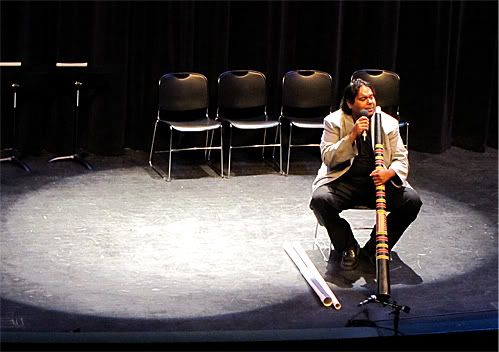As of this moment, I am 20,000 words into the Otherwhen Chronicles. What had existed previously as a series of loosely-connected short stories and vignettes is slowly being fleshed out into a full-fledged novel. This is proving both harder than I expected and easier in some ways, too. Easier, because having what amounts to a blueprint to draw from frees me from the contraints of plot development. I know how the story ends. Now all I have to do is fill in the blanks and smooth the transitions. Harder, because, as I’ve said previously, my predominant “style” is to let the characters tell their stories and go along for the ride as a transcriptionist of sorts
The latter is a very Bradbury-esque approach and one that has served me well through the years. Going back in to build upon already existing prose, however, is a new step for me. Oh, of course I’ve done something similar when I edit my work and find that I need to elaborate here, or clarify there, but I’ve never done anything as intensive as this. There have been entire scenes which have either been completely rewritten or disposed of entirely. In some ways, I feel like a vivisectionist, deconstructing the story at an almost molecular level, then reconstituting it in the hopes of giving it new life, like a latter-day Victor von Frankenstein. The method has both its rewards and its challenges.
Sometimes, I feel the need for a little advice, just to ensure that I’m on the right track. Writing, after all, can be a very insular pursuit. A while back, I remember reading a wonderful treatise on writing by the great Robert Louis Stevenson. Luckily, I bookmarked the website presenting those words of wisdom, so that when I felt my creative energies flagging, I might get a bit of a morale boost from somebody who actually knows a little something on the subject of writing. I mean, you can’t do much better than a recognized master in the art of literature, right?
A quick check in my bookmark file and I found what I was looking for: The Art Of Writing, by Robert Louis Stevenson. The following quote, lifted directly from Chapter IV: A Note On Realism gave me just the boost I needed, not because it told me what to do, so much as reminding me that I’m on the right track:
“A work of art is first cloudily conceived in the mind; during the period of gestation it stands more clearly forward from these swaddling mists, puts on expressive lineaments, and becomes at length that most faultless, but also, alas! that incommunicable product of the human mind, a perfected design. On the approach to execution all is changed. The artist must now step down, don his working clothes, and become the artisan. He now resolutely commits his airy conception, his delicate Ariel, to the touch of matter; he must decide, almost in a breath, the scale, the style, the spirit, and the particularity of execution of his whole design.”
These words and more can be found at the Literature Project, where Stevenson’s “The Art of Writing” are preserved in their entirety. As for me, it is time, once again, for me to don my working clothes and “become the artisan.” I just like the sound of that…



